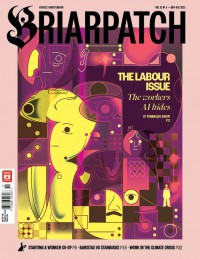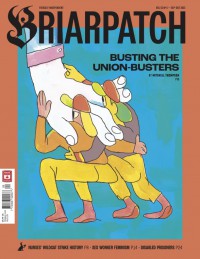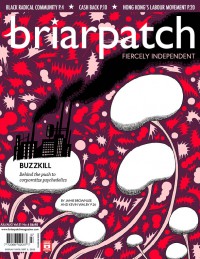-
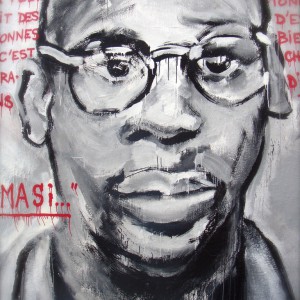 Magazine
Magazineexperiments in freedom
There is a mass grave here. The broken skins of some of the fruit reveal eyes, nasal cartilage, thumbs.
-
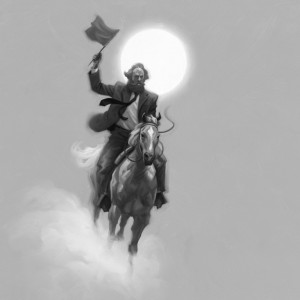 Magazine
MagazineLetter from the editor
With the country’s largest reserves of oil, natural gas, uranium, and potash, much of which is found on Indigenous land, the Prairies will continue to be at the front lines of capitalist expansion for years to come, and are poised to become a hub of resistance. It’s time for us to imagine the West as a different kind of “land of opportunity.”
-
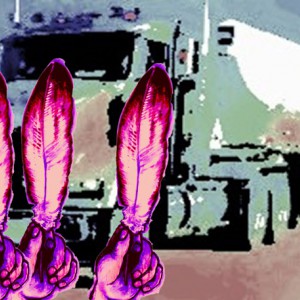 Magazine
MagazineFractured land
The first question asked when the issue of fracking on Kainai territory is presented to new ears is often, “How could this happen?” It is a difficult question to answer, but there are four major players: the gas and oil companies; government, both provincial and federal; the Blood Tribe chief and council; and the Blood Tribe member population.
-
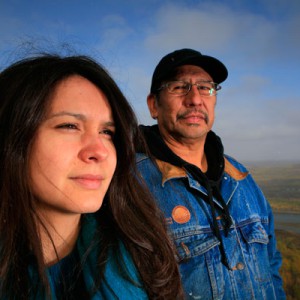 Magazine
MagazineAwaiting justice
For three decades, the traditional territory of the Lubicon Cree in northern Alberta has undergone massive oil and gas development without the consent of the Lubicon people and without recognition of our Aboriginal rights.
-
 Magazine
MagazineFlooded and forgotten
Around much of northern Manitoba, “hydro” is a dirty word, and for good reason. These projects have reconfigured the landscape of the entire region, drying whole rivers and engorging lakes.
-
1_300_300_90_s_c1.jpg) Magazine
MagazineDecolonizing together
Given the devastating cultural, spiritual, economic, linguistic and political impacts of colonialism on Indigenous people in Canada, any serious attempt by non-natives at allying with Indigenous struggles must entail solidarity in the fight against colonization.
-
 Magazine
MagazineRe-envisioning reconciliation
What does reconciliation look like for Indigenous peoples in what is currently Canada? In part, argues Leanne Simpson in Dancing on Our Turtle’s Back, it must take the form of the resurgence of Indigenous peoples’ political traditions in their nation-to-nation relationships with Canada.
-
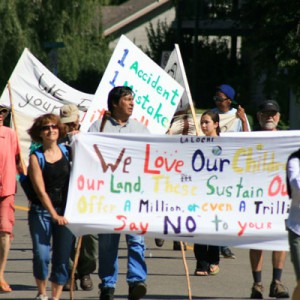 Magazine
MagazineStepping up for future generations
In summer 2011, several people from communities in northern Saskatchewan walked 820 kilometres from Pinehouse to Regina to raise awareness about the storage and transportation of nuclear waste in the province, and to oppose a proposed nuclear waste dump near Pinehouse. This is an excerpt from their radio interview with Don Kossick following the walk.
-
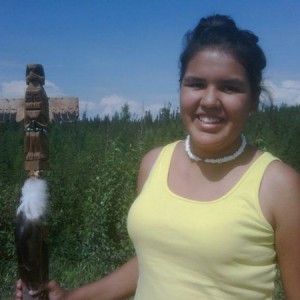 Magazine
MagazineThe next generation of land defenders
Meet the youth at the heart of a movement to raise awareness about a proposed nuclear waste dump near their communities. These five young people participated in an 820-kilometre walk from Pinehouse to Regina, Saskatchewan to oppose the storage and transportation of nuclear waste in the province.
-
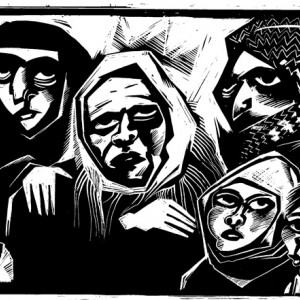 Magazine
MagazineFrom worker to worker
Since the 2005 call for solidarity from Palestinian trade unions and civil society organizations, unions all over the world have responded with resolutions and actions to break ties with Israel’s apartheid regime.
-
 Magazine
MagazineLebanon rising
Farah Koubaissy lifts a megaphone to the cheers of a crowd in downtown Beirut. The 24-year-old student, blogger and community organizer sports a calm smile, a keffiyeh scarf and a camera.
-
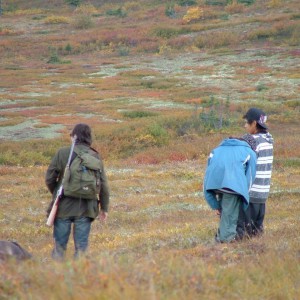 Magazine
MagazineHuman rights or Aboriginal rights?
Many Indigenous peoples feel that the UN Declaration on the Rights of Indigenous Peoples is a significant victory, and they are not wrong. But will the UNDRIP open the door for new attacks on Aboriginal rights in Canada?
-
 Magazine
MagazineOur home on Native land
As people across Canada mark the 144th anniversary of Confederation on July 1st, I cannot find reason to celebrate alongside them. Every Canada Day, I reflect on the continual theft of my land and resources, on broken treaties, on the genocide of my peoples and the refusal to recognize my sovereignty.
-
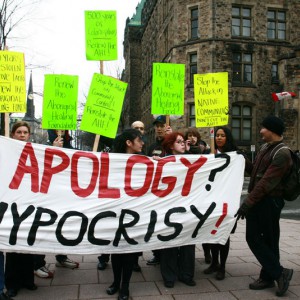 Magazine
MagazineHealing denied
Of the more than 150,000 First Nations, Inuit and Métis children who were forcibly removed from their families and enrolled in one of the many Indian Residential Schools (IRS) in Canada, it is estimated that there are 85,000 residential school survivors in Canada today. Alongside these survivors are the thousands more impacted by the intergenerational effects of residential schools on Aboriginal families.
-
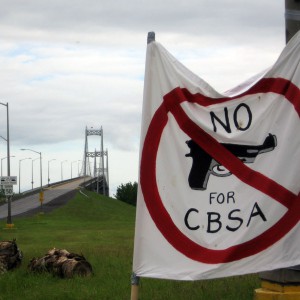 Magazine
MagazineA border runs through it
At midnight on May 31, 2009, the guards who manned the Canada Border Services Agency (CBSA) station on the Mohawk (Kahnienkehaka) reserve of Akwesasne, near Cornwall, Ontario, abandoned the Canadian side of the U.S.-Canada border and went home. The guards were to be issued 9-mm Beretta pistols on the following day as part of Canada’s border security policy, but had been warned by Akwesasne community groups that armed agents of the Canadian government would not be tolerated on their land.
-
 Magazine
MagazineForgotten histories of treaty-making
In Compact, Contract, Covenant, J. R. Miller provides the first comprehensive history of treaty-making in Canada. From the earliest days of trading partnerships and military alliances to modern comprehensive land claims, Miller explores the complex and shifting relations that guided the formation of treaties.
-
 Magazine
MagazineUnrepentant: Kevin Annett and Canada’s Genocide
Film review of Unrepentant: Kevin Annett and Canada’s Genocide

